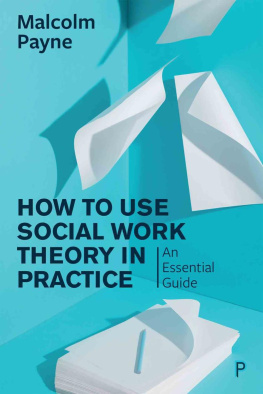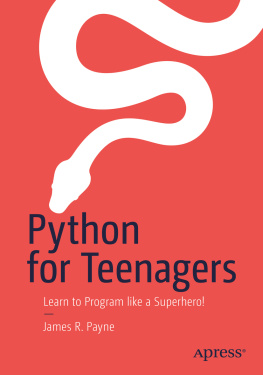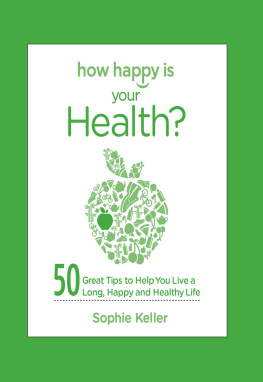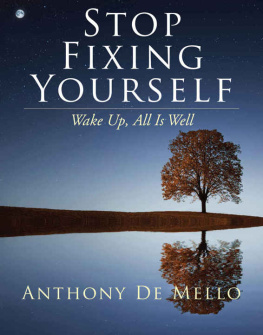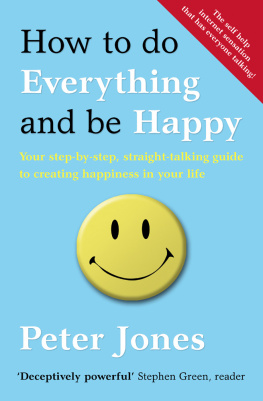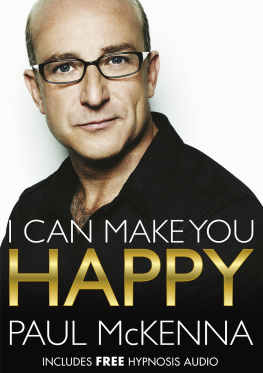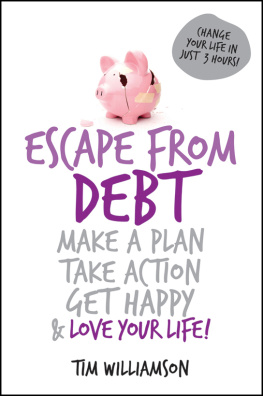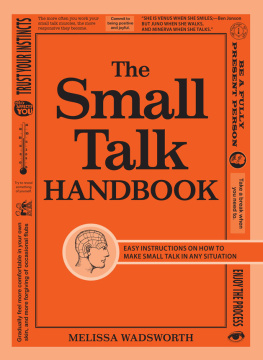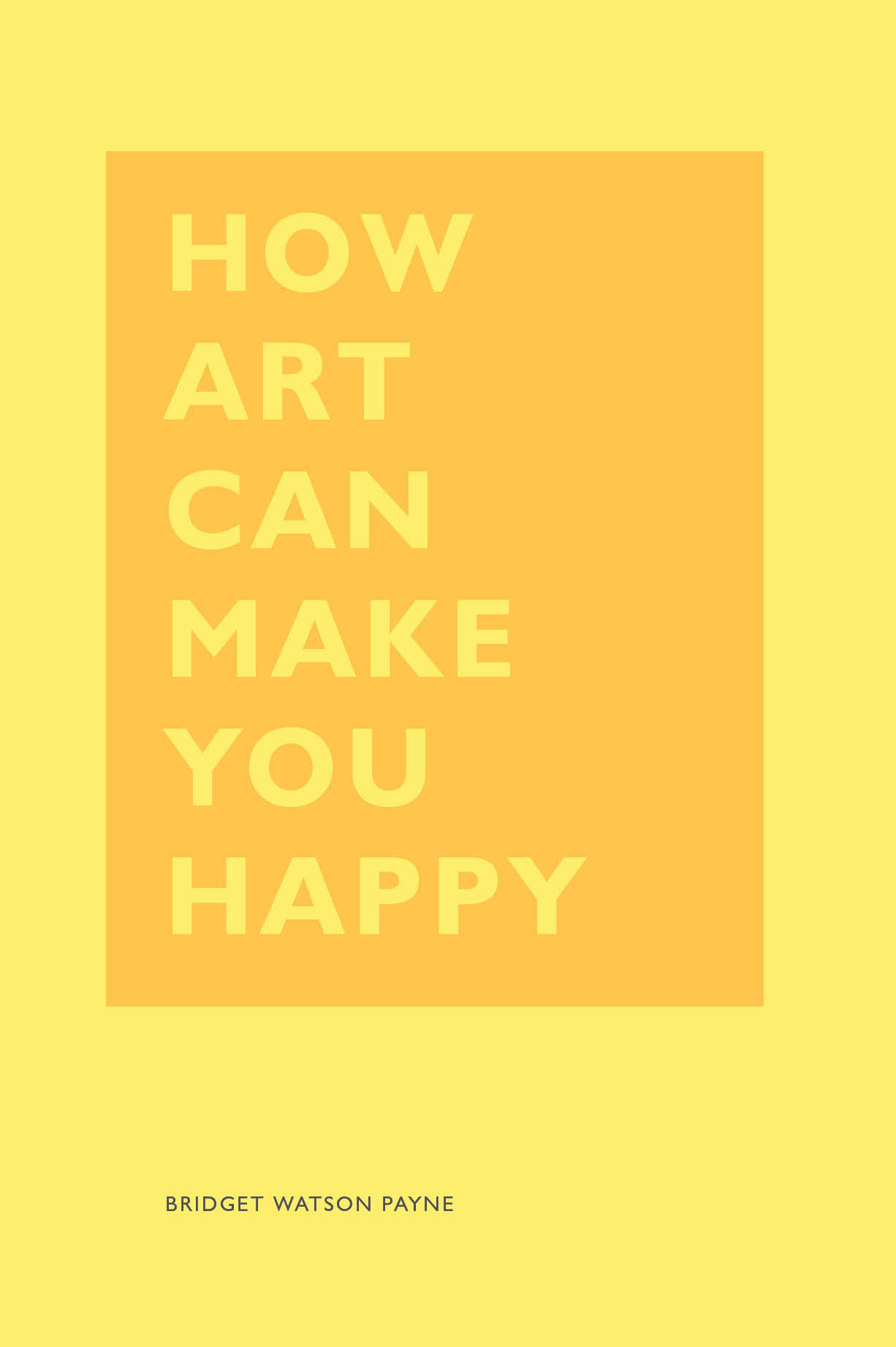

Copyright 2017 by Chronicle Books LLC.
All rights reserved. No part of this book may be reproduced in any form without written permission from the publisher.
ISBN 9781452153599 (epub, mobi)
Library of Congress Cataloging-in-Publication Data:
Names: Payne, Bridget Watson, author.
Title: How art can make you happy / by Bridget Watson Payne.
Description: San Francisco : Chronicle Books, 2017.
Identifiers: LCCN 2016021862 | ISBN 9781452153223 (alk. paper)
Subjects: LCSH: Art appreciation.
Classification: LCC N7477 .P39 2017 | DDC 701/.18dc23 LC record available at https://lccn.loc.gov/2016021862
Designed by Vanessa Dina
Chronicle Books LLC
680 Second Street
San Francisco, California 94107
www.chroniclebooks.com
Chronicle books and gifts are available at special quantity discounts to corporations, professional associations, literacy programs, and other organizations. For details and discount information, please contact our premiums department at or at 1-800-759-0190.
ART IS MAGICAL
INTRODUCTION
Once upon a time you loved art. Or else you want to discover art now. Its safe to assume one or the other of those things about you, right? Presumably the reason youre reading a book called How Art Can Make You Happy right now is that you either once had, or aspire to have, a happy romance with art. Maybe the love went astray or maybe you cant figure out how to get it off the ground in the first place. Maybe you used to go look at art in museums and galleries but you no longer make that a priority. Or maybe you want to do one or the other or both of those things but are afraid to start.
And none of this is making you any happier. Its not as if you intentionally decided, You know what? Art is taking up too much of my time and energy. Im going to let it go out of my life and then I will feel better, freer! No. Youre not only living a life that feels diminished by the absence of art in it, but youre also stuck hauling around an unpleasant load of guilt over how you should be having art in your life, but dont.
So that when you happen to have coffee with that one friend of yours who actually does go out to exhibitions and is knowledgeable about artists, you find yourself doing what guilty people dobemoaning, making excuses, bemoaning some morenot because your friend cares a bit whether you did or didnt make it out to the latest blockbuster show at the museum, but because you care. You care more than you care to admit. And you dont know how to fix it.
But heres the thing: Contrary to the impression you may gather from any number of sourcesranging from the art press to your grandmaart should bring happiness to your life. Lets say that one more time: Art should bring happiness to your life.
Is art always happy? No, of course not. No more than its always pretty, comfortable, or easy. But can engaging with artwith arts potent brew of visual pleasure, intellectual rigor, myriad meanings, and unexpected worldviewmake you a happier human being with a profoundly enriched life?
Resoundingly, the answer is: Yes.
Heres how.

WHAT IS ART ANYWAY?

ALL THE ART ALL THE TIME
Art is a big word, and its not really safe to assume we all mean the same thing when we say it. For instance, there are still loads of people, if you can believe it, hung up on the idea that things like craft or fashion design cant be art and shouldnt be shown in art museums.
This book takes a broad-minded approach to the concept of art. For our purposes, art includes but is not limited to: paintings that hang on walls; sculpture, performance, video, sound, installation, and street art; performing arts such as dance, music, and theater; things not traditionally considered art (like the aforementioned craft and fashion) but elevated to the level of art by their practitioners; literature, poetry, and really good essays; and amateur art made by regular people.
However, for some reason it seems to be visual art that induces the most guilt. Perhaps this is because its so tied up with sightseeingyoure supposed to want to go to the Louvre when youre in Paris. Guilty visual-art lovers have the perception that people who care about other art forms (the performing arts, for instance) just buy the tickets and go out and see the band or the play or whatever it is that floats their boats. But there are guilty music lovers and guilty theater lovers, too.

WHY LOOKING AT ART WILL MAKE YOU A HAPPIER HUMAN BEING

ART IS MAGICAL
Yes, art is magical. Studies show that looking at art stimulates, among other things, the motor cortex, the part of your brain that controls your bodys movements. When you look at art you dont just see it with your eyes or feel it with your brain, you also feel it with your whole body. Quite literally: Every fiber of your beingyour senses, your intellect, your emotions, even your physical corpusresponds to works of art. So that right there is pretty much the first magical property of art. It zings through you like a bolt of lightning.
Perusing more science brings to light more magic. One study demonstrated that looking at landscape paintings, and particularly seascapes, not only reduces stress but can actually speed up physical healing after surgery. The link between creativity (and the making of art in particular) and happiness is well established (despite the archetype of the tortured artist).
But thats not all. Art wakes you up to three profoundly important realities. Cognizance of any one of these realities alone can make you a much happier person. Together, they form an almost intoxicating brew of enhanced well-being. They are:
One, the reality of the world.
Two, the reality of other people.
Three, the reality of yourself.
THE REALITY OF THE WORLD
You need to let the little things that would ordinarily bore you suddenly thrill you.
ANDY WARHOL
The world around you is spectacular. And not just the big things, the oceans and the sunsets and the Eiffel Tower and whatnot. Like Andy said, if you let yourself, you can see just as much wonder in the little stuff. The Campbells soup can, the autumn sun on bricks, the eyelashes of a giraffe. Tuning in to the magnificence of reality, both natural and manmade, can increase your daily happiness quotient.
Great thinkersfrom poets to psychiatrists, philosophers to scientistshave known this to be true. One of the best treatments for ailments from vague malaise to serious depression and everything in betweenisolation, grief, boredom, creative block, the bluesis to step outside the front door. Go to the ocean. Go to the corner caf. Allow people or objects or nature to actually enter in through your eyeballs and make an impression on your brain. Start to see their beauty and you start, teeny tiny bit by teeny tiny bit, to bring more joy into your heart.


